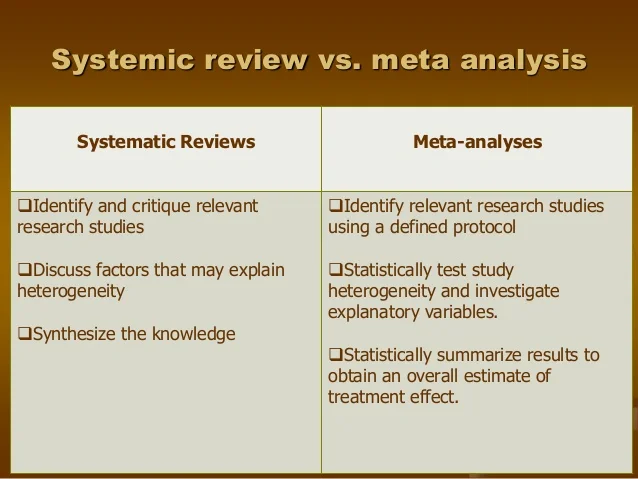
If you are considering doing a systematic review or meta-analysis, this step-by-step guide aims to support you along the way. It explains the background to these methodologies, what is involved, and how to get started, keep going, and finish!
It will direct you to useful resources provided by the University of Johannesburg (UJ) researchers and external bodies. We welcome others who have been through the process, to add useful hints and tips, and up-to-date resources particularly relevant to researchers and students at UJ.
What is a systematic review or meta-analysis?
A systematic review answers a defined research question by collecting and summarising all empirical evidence that fits pre-specified eligibility criteria.
A meta-analysis is the use of statistical methods to summarise the results of these studies.
Systematic reviews, just like other research articles, can be of varying quality. They are a significant piece of work (the Centre for Reviews and Dissemination at York estimates that a team will take 9-24 months), and to be useful to other researchers and practitioners they should have:

It is essential that each review is approached rigorously and with careful attention to detail. Plan carefully, and document everything. The consensus reporting guidelines for different study designs proposed by EQUATOR (http://www.equator-network.org/) are a useful starting point. PRISMA provides guidance on what you should include when reporting a systematic review.
Step 1: Why do a systematic review?
Step 2: Who will be involved?
Step 3: Formulate the problem. Has it been done before? Registering your review.
Step 4: Perform your search.
Step 5: Data extraction.
Step 6: Critical appraisal of studies (quality assessment).
Step 7 Data synthesis.
Step 8: Presenting results (writing the report).
Step 9: Archiving and updating.
Note: If you have any useful resources that would be beneficial for this guide, please let us know (Dorcas Rathaba or Mlungisi Dlamini).
Acknowledgements and References
Much of this advice is based on the excellent (and extensive) guidance from the Cochrane Collaboration (https://training.cochrane.org/handbook) and the Centre for Reviews and Dissemination at York (http://www.york.ac.uk/inst/crd/SysRev/!SSL!/WebHelp/SysRev3.htm). If you are proposing to perform a systematic review these provide invaluable detailed advice, and useful examples.

